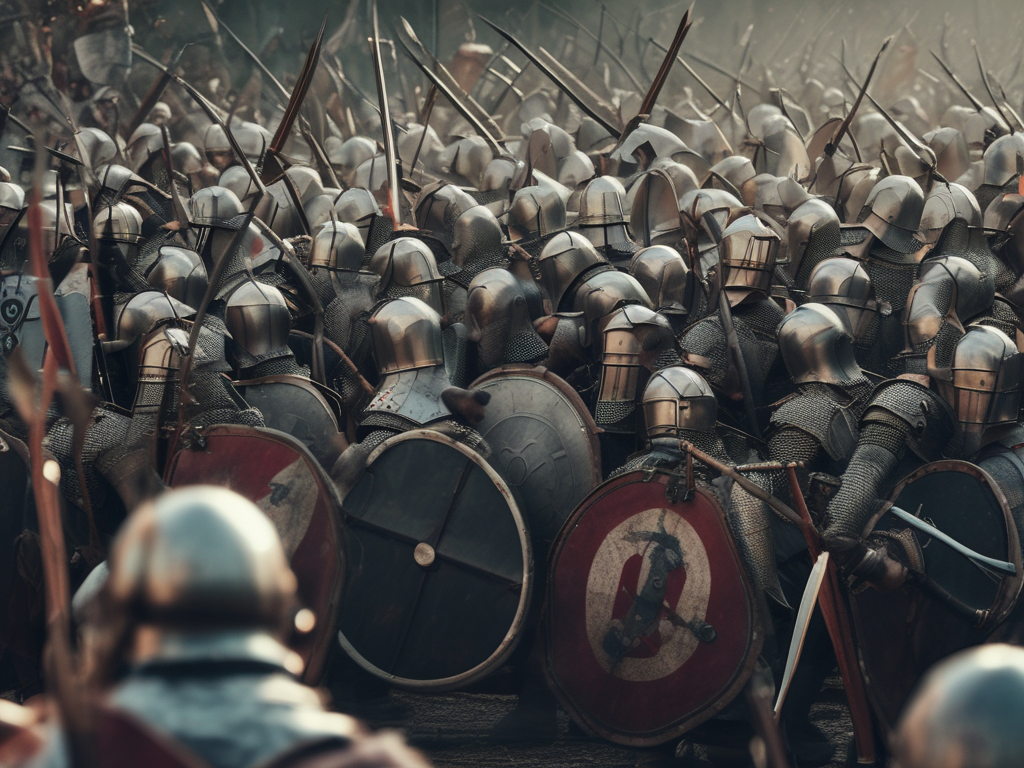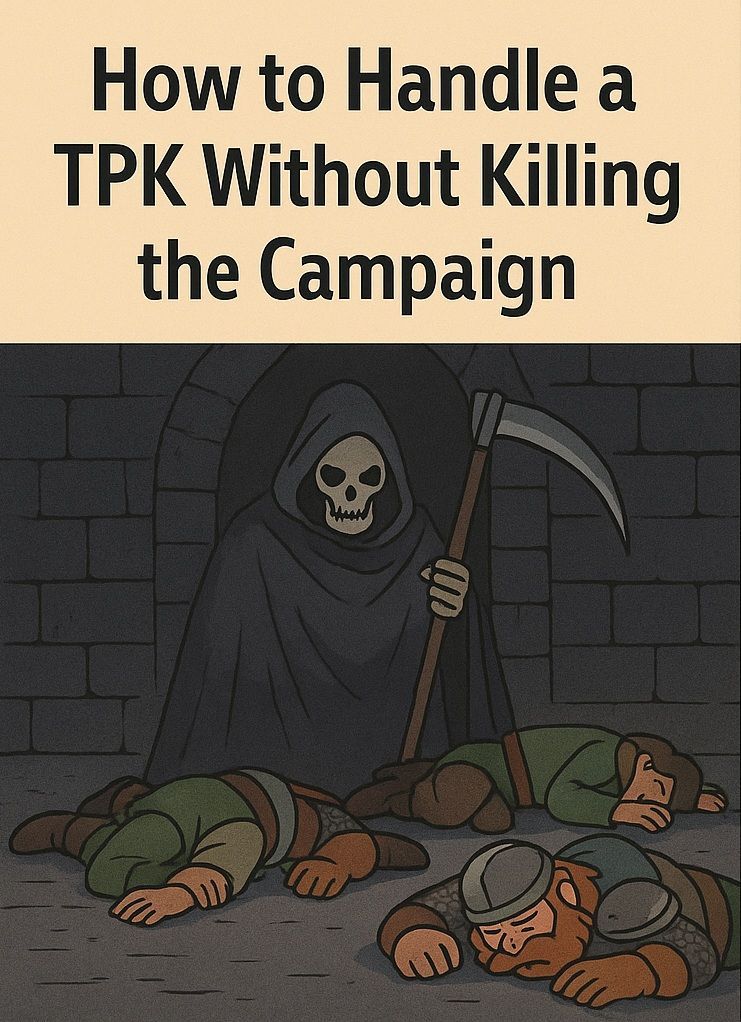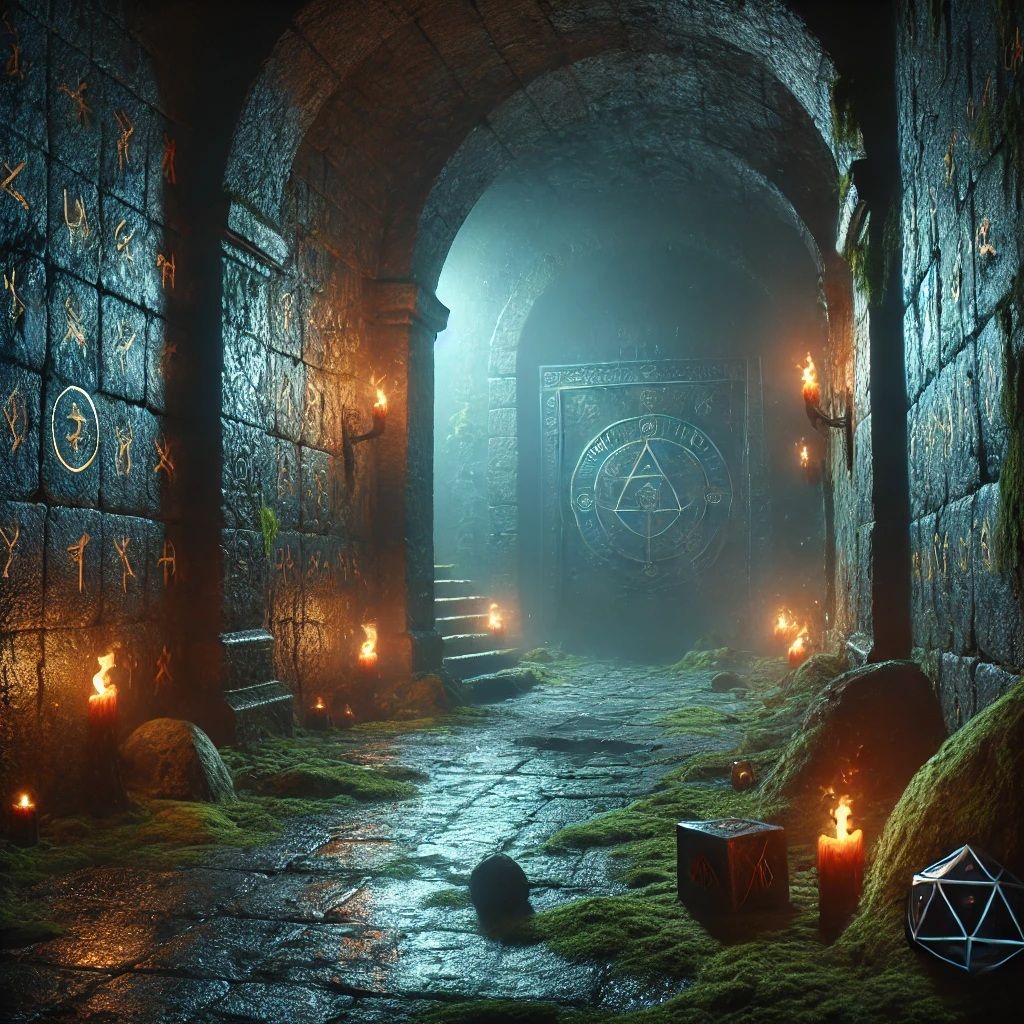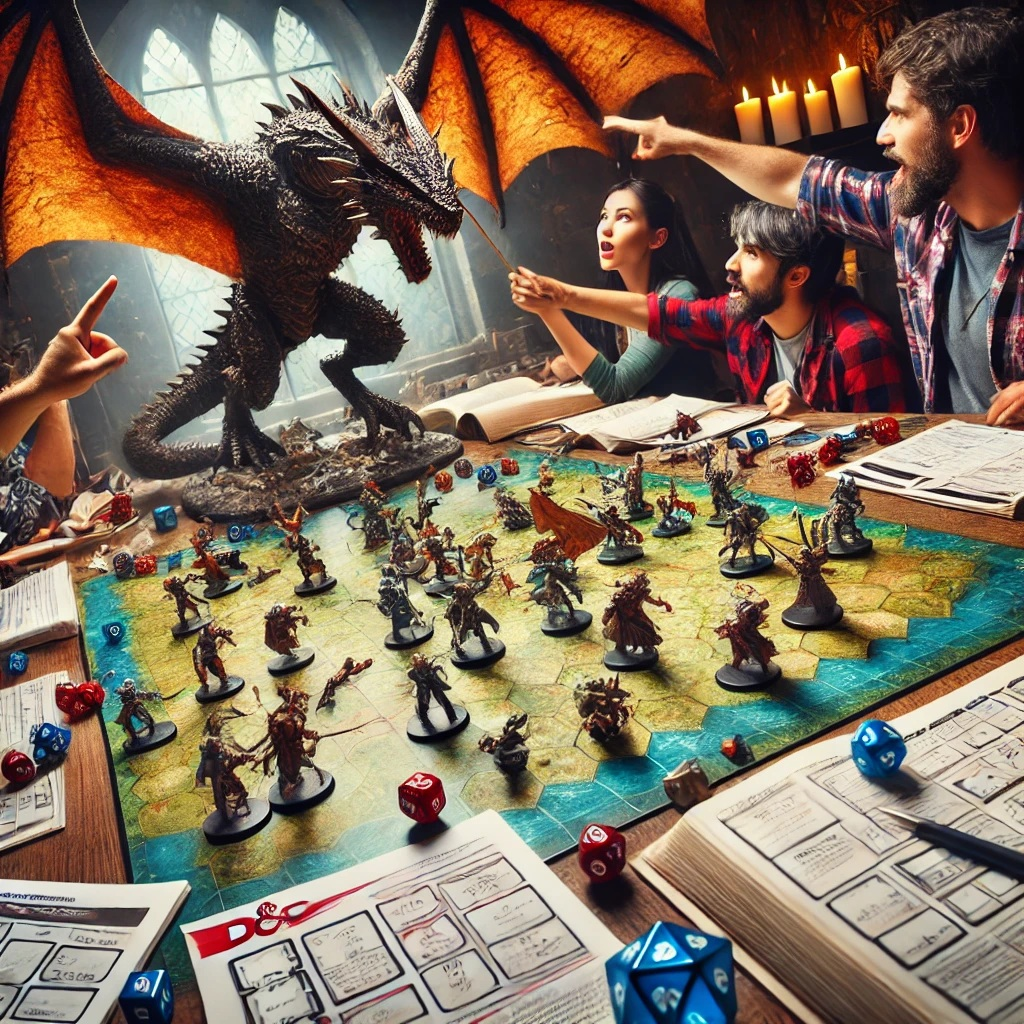Crafting Epic Battles: Designing Large-Scale Combat Encounters

Dear Readers, welcome back to our Dungeons & Dragons (D&D) blog! Today, we’re delving into the thrilling and complex world of large-scale combat encounters. Crafting epic battles can elevate your campaign, offering dramatic moments, challenging your players, and creating memories that last a lifetime. However, designing and managing these encounters requires careful planning and execution to ensure they are balanced, engaging, and run smoothly. In this post, we’ll explore strategies for designing large-scale combat encounters, discuss ways to maintain balance and excitement, and provide practical examples to inspire your own epic battles. So, let’s embark on this journey to master the art of crafting epic battles and bringing your campaign to life.
The Importance of Large-Scale Combat Encounters
Large-scale combat encounters can provide numerous benefits to your campaign, adding depth and excitement to the story. Here are some key advantages:
1. Dramatic Storytelling
Epic battles can serve as pivotal moments in your campaign, driving the narrative forward and providing dramatic resolutions to key plot points.
Example: A climactic battle between the forces of good and an invading army of undead can serve as the final showdown in a campaign arc, determining the fate of a kingdom.
2. Challenging Gameplay
Large-scale encounters challenge your players’ tactical skills, requiring them to think strategically and work together to overcome powerful foes and complex scenarios.
Example: A battle against a dragon and its minions forces players to manage multiple threats, coordinate their abilities, and adapt to changing battlefield conditions.
3. Immersive Experience
Well-designed epic battles can immerse players in the game world, making them feel like they are part of a grand and heroic struggle.
Example: A siege on a fortified city with waves of attackers, defensive maneuvers, and dramatic moments can create a cinematic and immersive experience for your players.
Strategies for Designing Large-Scale Combat Encounters
Designing large-scale combat encounters requires careful planning and consideration of various elements. Here are some strategies to help you create engaging and memorable battles:
1. Define the Scope and Objectives
Determine the scope and objectives of the battle. Consider the size of the forces involved, the key objectives for both sides, and the overall stakes of the encounter.
Example: A battle to defend a village from an orc horde may have objectives such as protecting civilians, repelling the attackers, and preventing key buildings from being destroyed.
2. Balance Challenge and Fairness
Ensure that the encounter is challenging but fair. Balance the power and number of enemies with the capabilities of your players, providing opportunities for strategic thinking and creative solutions.
Example: An encounter with a powerful lich and its undead minions should include opportunities for the players to exploit weaknesses, such as disrupting the lich’s concentration or destroying its phylactery.
3. Use Dynamic Battlefields
Design dynamic battlefields that change over the course of the encounter. Include environmental hazards, moving terrain, and interactive elements that keep the battle exciting and unpredictable.
Example: A battle on a crumbling bridge may involve sections collapsing, creating new obstacles and changing the battlefield’s layout, forcing players to adapt their strategies.
4. Incorporate Multiple Phases
Divide the battle into multiple phases, each with its own challenges and objectives. This structure adds depth to the encounter and prevents it from becoming monotonous.
Example: An epic battle against a dragon may include an initial phase of aerial combat, followed by a ground phase where the players face the dragon’s breath attacks and minions, and culminating in a final showdown within the dragon’s lair.
5. Highlight Character Abilities
Design encounters that highlight and utilize the unique abilities of each player character. Provide opportunities for players to shine and contribute to the battle’s success in meaningful ways.
Example: Include magical barriers that the party’s wizard can dispel, enemies that the rogue can sneak attack from hidden positions, and strategic points where the fighter’s defensive abilities can hold the line.
6. Use Minions and Reinforcements
Incorporate minions and reinforcements to create a sense of scale and ongoing threat. This can make the battle feel more epic and provide additional challenges for the players to manage.
Example: A necromancer summoning waves of undead minions throughout the battle forces players to constantly adapt and address new threats, adding to the encounter’s intensity.
Practical Examples of Large-Scale Combat Encounters
To illustrate how you can apply these strategies, here are practical examples of large-scale combat encounters designed for different scenarios:
Example 1: The Siege of Stonehaven
Setting: The fortified city of Stonehaven is under siege by a massive orc horde. The players must defend the city and repel the attackers to protect its inhabitants.
Objectives:
- Protect the city gates from being breached.
- Defend key locations such as the town square and the temple.
- Repel waves of orc attackers and their siege engines.
Battlefield: The battlefield includes the city walls, gates, and various key locations within the city. Environmental elements such as burning buildings, rubble, and barricades add to the dynamic nature of the battle.
Phases:
- Initial Assault:
- The orc horde launches a frontal assault on the city gates using battering rams and ladders.
- Players must hold the gates and repel the attackers while dealing with ranged attacks from orc archers.
- Breach and Chaos:
- If the gates are breached, the orcs pour into the city, attacking key locations.
- Players must split their efforts to defend multiple points, protect civilians, and prevent key buildings from being destroyed.
- Final Stand:
- The orc warlord and his elite guards lead a final assault on the town square.
- Players face the warlord in a climactic battle, using the environment and strategic positioning to gain the upper hand.
Dynamic Elements:
- Environmental Hazards: Collapsing buildings, spreading fires, and barricades that can be used for cover or destroyed by the attackers.
- Reinforcements: Waves of orc reinforcements arrive periodically, adding to the ongoing threat and requiring players to adapt their strategies.
- Special Actions: Players can activate defensive mechanisms such as oil traps, ballistae, and magical wards to aid in the defense.
Outcome: The battle’s outcome depends on the players’ success in defending the city and achieving their objectives. Victory leads to the city’s salvation and potential rewards, while failure results in significant consequences and new challenges.
Example 2: The Dragon’s Wrath
Setting: A powerful red dragon has emerged from its lair, attacking a nearby village. The players must confront the dragon and protect the villagers from its wrath.
Objectives:
- Protect the villagers and escort them to safety.
- Confront and defeat the dragon.
- Minimize destruction to the village.
Battlefield: The village and its surroundings, including open fields, narrow streets, and defensible buildings. The dragon’s fiery breath creates hazards and changes the terrain.
Phases:
- Aerial Assault:
- The dragon attacks from the air, using its breath weapon and physical attacks.
- Players must protect the villagers and use ranged attacks to drive the dragon to the ground.
- Ground Battle:
- Once the dragon is forced to the ground, the players engage it in melee combat.
- The dragon uses its lair actions, such as creating firewalls and summoning fire elementals, to challenge the players.
- Lair Showdown:
- The final phase takes place in the dragon’s lair, where it makes a last stand.
- Players must navigate environmental hazards and defeat the dragon in its most powerful form.
Dynamic Elements:
- Environmental Hazards: The dragon’s fiery breath creates spreading fires, collapsing buildings, and areas of intense heat that players must navigate.
- Reinforcements: The dragon summons fire elementals and draconic minions to aid in the battle.
- Special Actions: Players can use the environment to their advantage, such as collapsing structures on the dragon or using water sources to extinguish fires.
Outcome: Victory results in the defeat of the dragon and the village’s salvation, with potential rewards and recognition. Failure leads to significant destruction and potential loss of life, altering the campaign’s direction.
Example 3: The Battle for the Crystal Spire
Setting: The ancient Crystal Spire, a powerful magical nexus, is under attack by a coalition of dark wizards and their monstrous allies. The players must defend the spire and prevent the enemy from harnessing its power.
Objectives:
- Protect the Crystal Spire from being captured.
- Defeat the dark wizards and their monstrous allies.
- Activate the spire’s defenses to aid in the battle.
Battlefield: The Crystal Spire and its surrounding area, including magical wards, defensive structures, and terrain features such as cliffs and magical barriers.
Phases:
- Initial Defense:
- The enemy forces launch an assault on the spire’s outer defenses.
- Players must hold the line and activate defensive mechanisms such as magical barriers and arcane turrets.
- Inner Sanctum:
- If the outer defenses are breached, the battle moves to the inner sanctum of the spire.
- Players face the dark wizards and their elite guards in a battle for control of the spire’s power.
- Final Confrontation:
- The final phase involves a showdown with the enemy leader, a powerful archmage seeking to harness the spire’s magic.
- Players must disrupt the archmage’s rituals and defeat him to secure victory.
Dynamic Elements:
- Environmental Hazards: Magical traps, unstable arcane energy, and shifting terrain that players must navigate.
- Reinforcements: Waves of enemy reinforcements arrive periodically, adding to the ongoing threat.
- Special Actions: Players can activate the spire’s defenses, such as summoning arcane guardians and triggering powerful magical effects to aid in the battle.
Outcome: Victory results in the protection of the Crystal Spire and the defeat of the dark wizards, with potential rewards and recognition. Failure leads to the enemy harnessing the spire’s power, resulting in dire consequences and new challenges for the players.
Enhancing Large-Scale Combat Encounters
To make your large-scale combat encounters even more engaging and memorable, consider incorporating the following enhancements:
1. Use Visual Aids
Visual aids such as maps, miniatures, and props can help players visualize the battlefield and keep track of the action. This enhances immersion and makes it easier to manage complex encounters.
Example: Use a detailed battle map with terrain features, miniatures to represent characters and enemies, and props such as tokens or cards for special actions and effects.
2. Incorporate Sound and Music
Sound effects and music can add to the atmosphere and tension of the battle. Use background music, sound effects, and voice modulation to create an immersive experience.
Example: Play dramatic battle music during the encounter, use sound effects for spells and attacks, and modulate your voice for enemy dialogue and commands.
3. Introduce Subplots and Side Objectives
Incorporate subplots and side objectives within the battle to add depth and complexity. These can provide additional challenges and rewards, making the encounter more dynamic and engaging.
Example: Include side objectives such as rescuing trapped villagers, capturing enemy leaders for interrogation, or retrieving important artifacts during the battle.
4. Use Narrative Descriptions
Use vivid narrative descriptions to bring the battle to life. Describe the sights, sounds, and sensations of the battlefield, and highlight the emotions and stakes involved.
Example: Describe the roar of the dragon, the heat of its breath, the screams of villagers, and the tension in the air as the players face overwhelming odds.
5. Encourage Player Creativity
Encourage players to think creatively and use their abilities in innovative ways. Reward creative solutions and improvisation, making the encounter feel more dynamic and rewarding.
Example: If a player uses a spell or ability in a unique way to gain an advantage, such as creating a barrier with a wall spell or using illusions to deceive enemies, acknowledge their creativity and incorporate it into the encounter.
Managing Large-Scale Combat Encounters
Managing large-scale combat encounters can be challenging, but with careful planning and execution, you can ensure they run smoothly and remain engaging. Here are some tips for managing these encounters:
1. Plan Ahead
Plan the encounter thoroughly, including the layout of the battlefield, the placement of enemies, and the timing of reinforcements and environmental changes. Having a detailed plan helps you stay organized and ensures the encounter flows smoothly.
Example: Create a battle plan with maps, notes on enemy tactics, and a timeline of events to guide you through the encounter.
2. Keep Track of Initiative and Actions
Keeping track of initiative and actions is crucial in large-scale encounters. Use initiative trackers, digital tools, or physical props to stay organized and ensure everyone gets their turn.
Example: Use an initiative tracker board or digital app to manage initiative order and track ongoing effects and conditions.
3. Delegate Tasks
Consider delegating tasks to players to help manage the encounter. This can include tracking hit points, managing minions, or handling specific elements of the battlefield.
Example: Assign a player to track the hit points and conditions of minions, freeing you up to focus on managing the main enemies and dynamic elements.
4. Maintain Pacing
Maintain a steady pacing to keep the encounter engaging. Avoid long pauses and downtime by keeping the action moving and ensuring everyone is involved.
Example: Use a timer to keep turns brief and encourage players to think quickly. If necessary, prompt players to make decisions to maintain the flow of the encounter.
5. Be Flexible
Be prepared to adapt and improvise as the encounter unfolds. Players may come up with unexpected strategies or actions that require adjustments to your plan.
Example: If players use a creative tactic to gain an advantage, incorporate it into the encounter and adjust the challenges accordingly to maintain balance and excitement.
Example of an Epic Battle Campaign Arc
To illustrate how you can implement these strategies in a campaign, here’s an example of an epic battle campaign arc:
Campaign: War of the Shadowlands
Setting: The Shadowlands, a dark and mysterious realm on the edge of the known world, is threatened by an ancient evil seeking to plunge the world into darkness. The players must lead the defense against this formidable foe and protect the realms of light.
Story Arc:
- The Gathering Storm:
- The players are summoned to a council of leaders from various kingdoms to address the growing threat of the Shadowlands.
- They embark on a series of quests to gather allies, secure resources, and uncover the enemy’s plans.
- The Siege of Evernight:
- The Shadowlands launch a massive assault on the city of Evernight, a key stronghold on the border of the Shadowlands.
- The players must defend the city, coordinate with allied forces, and repel the enemy’s attack.
- The Battle of the Forgotten Vale:
- The players lead a counteroffensive into the Shadowlands, seeking to disrupt the enemy’s operations and weaken their forces.
- They engage in a series of battles across the treacherous terrain of the Forgotten Vale, facing powerful foes and environmental hazards.
- The Final Confrontation:
- The players confront the ancient evil in its lair, the Citadel of Shadows, in a climactic battle to determine the fate of the world.
- They must navigate the citadel’s defenses, defeat the enemy’s champions, and ultimately face the ancient evil in a final showdown.
Key Battles:
- The Siege of Evernight:
- Objectives: Protect the city gates, defend key locations, repel waves of attackers.
- Dynamic Elements: Collapsing buildings, spreading fires, reinforcements, and special actions such as activating defensive mechanisms.
- The Battle of the Forgotten Vale:
- Objectives: Disrupt enemy operations, defeat key leaders, secure strategic points.
- Dynamic Elements: Environmental hazards such as treacherous terrain and magical anomalies, waves of reinforcements, and interactive elements such as collapsing bridges and ancient traps.
- The Final Confrontation:
- Objectives: Navigate the citadel’s defenses, defeat enemy champions, confront the ancient evil.
- Dynamic Elements: Shifting terrain, magical traps, waves of powerful enemies, and special actions such as disrupting enemy rituals and activating ancient wards.
Enhancements:
- Use detailed maps and miniatures to visualize the battles and keep track of the action.
- Incorporate sound effects and music to enhance the atmosphere and tension.
- Introduce subplots and side objectives to add depth and complexity to the battles.
- Use vivid narrative descriptions to bring the battles to life and highlight the emotions and stakes involved.
- Encourage player creativity and reward innovative solutions and tactics.
Outcome: The outcome of the campaign depends on the players’ success in the key battles and their ability to rally allies, secure resources, and confront the ancient evil. Victory leads to the salvation of the realms of light and potential rewards and recognition, while failure results in significant consequences and new challenges for the players.
Conclusion
Crafting epic battles and designing large-scale combat encounters can elevate your D&D campaign, offering dramatic moments, challenging gameplay, and immersive experiences. By defining the scope and objectives, balancing challenge and fairness, using dynamic battlefields, incorporating multiple phases, highlighting character abilities, and using minions and reinforcements, you can create engaging and memorable battles that enhance your campaign.
Enhance your encounters with visual aids, sound and music, subplots and side objectives, narrative descriptions, and encouraging player creativity. Manage these encounters effectively by planning ahead, keeping track of initiative and actions, delegating tasks, maintaining pacing, and being flexible.
Whether you’re defending a city from an invading horde, confronting a powerful dragon, or battling an ancient evil, well-designed large-scale combat encounters can create unforgettable moments and enrich your campaign.
Until next time, Dear Readers…






















